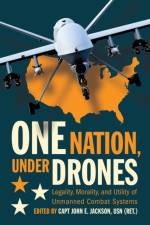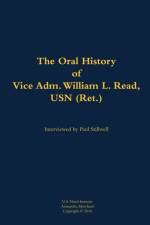685,-
Represented in this volume are: Bassett, Capt. James Jr., USNR (1912-1978); Pacific Fleet public relations officer in 1941-42; interviewed by Kitchen in May 1969; 32 pages Bauernschmidt, Rear Adm. George W., SC, USN (Ret.) (1899-1998); neighbor of the Nimitzes in the 1920s; interviewed by Mason in August 1969; 25 pages Callaghan, Vice Adm. William M., USN (Ret.) (1897-1991); member of Pacific Fleet war plans staff in World War II; interviewed by Mason in June 1969; 25 pages Chase, Mr. H. Joseph (1908-1976); member of the NROTC unit at University of California in the 1920s; interviewed by Kitchen in October 1969; 33 pages Court, Captain Alvah B., USN (Ret.) (1883-1976); Naval Academy classmate; interviewed by Mason in May 1969; 19 pages Curts, Adm. Maurice E., USN (Ret.) (1898-1976); Pacific Fleet communication officer in World War II; interviewed by Hopper in June 1969; 17 pages Lattu, Rear Adm. Onnie P., USNR (Ret.) (1906-1995); member of the NROTC unit at University of California in the 1920s; interviewed by Mason in July 1969; 20 pages Mercer, Rear Adm. Preston V., USN (Ret.) (1901-1970); flag secretary to Nimitz in the late 1930s and during World War II; interviewed by Mason in July 1969; 53 pages Peterson, Rear Adm. Mell A., USN (Ret.) (1908-1970): Pacific Fleet assistant gunnery officer in World War II; interviewed by Kitchen in May 1969; 33 pages Plank, Capt. David P. W., CHC, USN (1927-); chaplain at Yerba Buena Island, near San Francisco, in the mid-1960s; interviewed by Mason in July 1969; 21 pages Wheeler, Mr. Joseph Jr. (1906-1987) and Mrs. Alice (1907-1987); neighbors of the Nimitzes on Long Island in the late 1940s; interviewed by Mason in August 1969; 20 pages Based on six interviews conducted by John T. Mason, Jr. Altogether, the volume contains 251 pages of interview transcript plus indices. The transcripts are copyright by the U.S. Naval Institute; the interviewees have placed no restrictions on their use.



